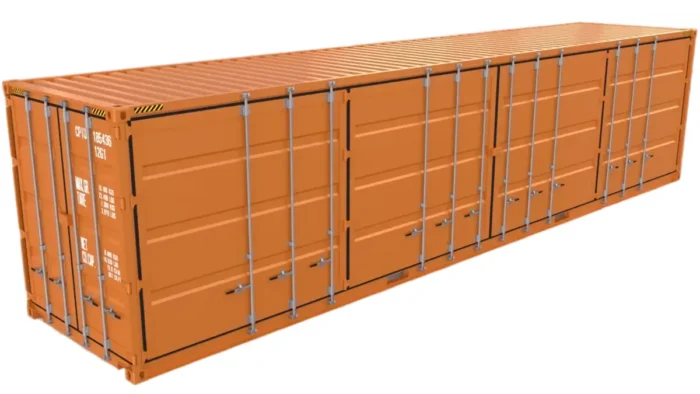When running a successful warehouse operation, efficient storage of goods is crucial. Properly organized storage maximizes space, improves productivity, and reduces the risk of damage or loss.
In this blog post, I’ll walk you through six effective ways to store goods in your warehouse and provide practical tips on implementing each method.
1. Pallet Racking Systems
Pallet racking systems are a popular choice for storing goods in a warehouse. They are versatile and can accommodate various products, making them suitable for various industries. To utilize pallet storage racking effectively, ensure you organize products by size, weight, or demand. Heavier items should be placed on lower shelves, and you should regularly inspect racks for any signs of damage to maintain safety.
2. Shelving Units
Shelving units are excellent for storing smaller items, spare parts, or products that require easy access. To maximize space, use adjustable shelves and consider implementing a first-in, first-out (FIFO) system to manage inventory efficiently. Labeling shelves and using barcode systems can also streamline retrieval processes.
3. Bulk Storage
For large quantities of similar items, bulk storage solutions are ideal. This method involves stacking goods directly on the floor or on pallets without individual shelving. To make the most of bulk storage, maintain clear aisles for accessibility, and use appropriate stacking techniques. Regularly check for damaged items that may compromise the stability of your stacks.
- Inventory organization: Categorize and label items in your warehouse to quickly identify and access products when needed. Utilize pallets, bins, or containers to group similar items together, making it easier to manage inventory and reduce the risk of misplacement.
- Stacking safety: When stacking goods directly on the floor or on pallets, follow safe stacking practices. Place heavier items at the bottom to prevent toppling and ensure stability. Use pallets in good condition and stack them evenly to distribute weight evenly across the base.
- Aisle management: Maintain clear and organized aisles between bulk storage stacks. These aisles should be wide enough to accommodate machinery like forklifts and provide easy access for personnel. Regularly check for obstructions or clutter that can hinder movement.
- Regular inspections: Consistently inspect your bulk storage area for any damaged items or compromised stability in your stacks. Damaged goods can pose safety hazards and may lead to inventory losses. Regular checks can help you identify and address issues promptly.

4. Flow Racks (Carton Flow and Pallet Flow)
Flow racks are designed for high-density storage and efficient order picking. Carton flow racks are suitable for smaller items and use gravity to move products forward, while pallet flow racks are used for larger loads. To implement flow racks effectively, ensure proper labeling and organize products based on their order frequency to reduce picking time.
Related: What Does a Supply Chain Manager Do in 2023?
5. Mezzanine Floors
Mezzanine floors can double your warehouse’s storage space by utilizing vertical space. These platforms are ideal for offices, storage, or additional workspace. When installing mezzanine floors, follow safety regulations, and consider the weight-bearing capacity. This extra space can help you expand your inventory without increasing your warehouse footprint.
- Safety compliance: Prioritize safety when installing mezzanine floors. Ensure your design and construction adhere to all safety regulations and building codes. This includes fire safety, load-bearing capacity, and structural integrity assessments.
- Weight-bearing capacity: Determine the load capacity of your mezzanine floor and its supporting structure. Understand the specific requirements of your inventory and storage needs, and ensure that the mezzanine can safely accommodate the weight of stored goods and equipment.
- Space optimization: Carefully plan the layout of your mezzanine floor to maximize its utility. Consider factors like aisle width, storage configurations, and accessibility for efficient inventory management. This extra space should enhance your operations, not hinder them.
- Integration with workflow: Integrate the mezzanine floor seamlessly into your warehouse workflow. Design it to serve its intended purpose: storage, office space, or additional workspace. Ensure that it complements your overall warehouse layout and doesn’t disrupt the flow of goods or personnel.
6. Automated Storage and Retrieval Systems (AS/RS)
Incorporating automation into your warehouse can significantly improve storage efficiency. AS/RS systems use robots or automated cranes to retrieve items, reducing the need for manual labor. When implementing AS/RS, plan your warehouse layout carefully to optimize the flow of goods and ensure compatibility with your inventory management software.
Conclusion
Efficient warehousing relies on smart storage solutions that align with your inventory needs. By utilizing pallet racking systems, shelving units, bulk storage, flow racks, mezzanine floors, and automation, you can maximize space, improve accessibility, and boost productivity in your warehouse. Regularly inspect and maintain your storage systems to ensure safe and efficient operations. Implementing these storage methods will help you streamline your warehouse operations and ultimately drive success in your business.





